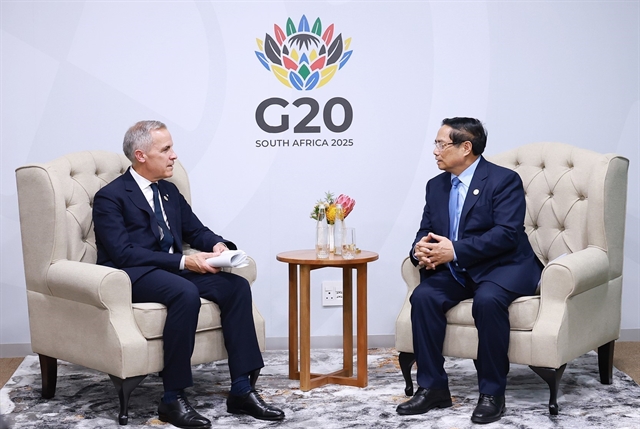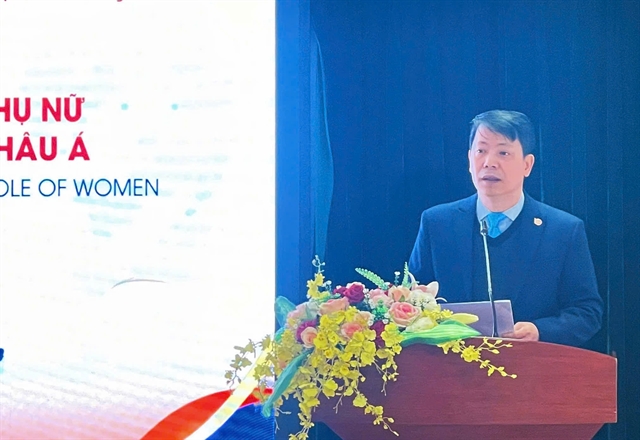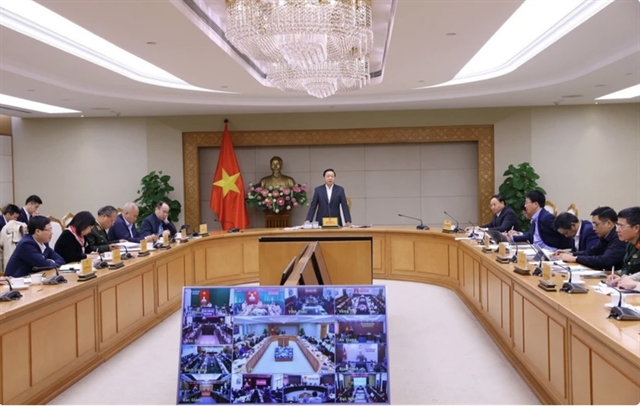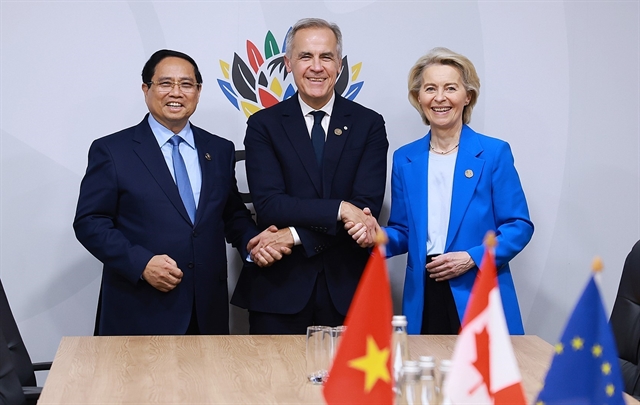 Politics & Law
Politics & Law

 |
| Deputy Prime Minister Trần Hồng Hà chairs the online meeting on adjustment of land use targets on January 4. VNA/VNS Photo |
HÀ NỘI – Adjustment of land use targets did not take away land or other resources of localities, but only created conditions for further development, said deputy Prime Minister Trần Hồng Hà.
The Deputy Prime Minister yesterday chaired a meeting on plans to adjust land use targets as per Prime Minister’s Decision 326/QĐ-TTg, dated March 9, 2022.
The decision is to allocate quotas for national land use for the 2021-2030 period, vision to 2050, and a five-year National Land Use Plan of the 2021-2025 period.
The conference was held online in 63 provinces and centrally-run cities nation-wide.
The Deputy PM emphasised that the recent development of plans to allocate and adjust land use targets still encountered many difficulties and problems in planning, legal basis and practice.
Therefore, it is necessary to continue to adjust the allocation of land use targets to keep up with development requirements, from the perspective of ‘national interests first’, he told the meeting.
The adjustment needs to give priorities for key and national infrastructure projects to promote inter-provincial and inter-regional linkages and connection among economic and tourist zones, and the projects of economic restructuring and national development in localities with big advantages in attracting investment and effectively using land resources, he said.
Land quotas for industrial zones and urban areas must be adjusted based on the current status, forecast and potential assessments with scientific, objective, public and transparent performance, and flexible market requirements.
"Adjusting land targets does not take away local resources and land resources, but only brings opportunities for development. The Government will listen to localities to continue to adjust," Hà said.
He also noted that the Ministry of Natural Resources and Environment (MONRE) has to strengthen the legal basis for older land funds in the spirit of ‘both encouraging and controlling this process with a scientific basis’.
According to the MONRE’s report, three types of land use criteria that receive a lot of comments from localities are industrial park land, transportation land and urban land.
The National Assembly decided that by 2025, the whole country will have 152,840ha of industrial park land (including existing industrial parks) while localities proposed to increase more than 49.5ha compared to the approved target.
Notably, some provinces have very low implementation and filling rates of industrial parks and are not in key industrial development areas but still propose additional increases.
MONRE has developed a plan to supplement industrial park land for provinces in development driving regions and industrial belts that have urgent needs, attracted investors, and have synchronous technical and social infrastructure meeting the conditions for industrial parks.
For provinces that do not receive adjustment or adjust downward, the public industrial land target still ensures the implementation of industrial parks that are proposing investment policies and attracting investment.
Regarding the transport land target, the ministry said that a few localities have demand to accelerate progress or supplement key national transport projects after reviewing and evaluating the medium-term public investment plan.
According to the ministry, most provinces have not reviewed land use targets allocated to the district level so when new projects arise, they proposed land quotas instead of reviewing and adjusting the local planning.
Moreover, the localities have not yet determined the order of priority for transport works and projects associated with the medium-term public investment plan and the ability to attract off-budget investment capital.
In the meeting, representatives of the provincial People's committees of Hà Nam, Đắk Nông, Đắk Lắk, Tuyên Quang, Thừa Thiên-Huế and Thái Nguyên requested to clarify the proposal of adjusting and supplementing land quotas for industrial parks and high-tech zones, and transport land to implement key national works and projects, as well as meet local socio-economic development requirements.
Leaders of ministries and sectors discussed and clarified principles and criteria of adjustment of land use targets allocated to localities, in the spirit that this is a very important development resource and must balance needs and efficiency, and have a long-term vision.
MONRE’s deputy minister Lê Minh Ngân said that the principle of adjusting land use targets must ensure publicity, transparency, savings and efficiency on the basis of balancing land use needs of sectors, fields and localities in accordance with reality for the common development goals of the country. VNS




